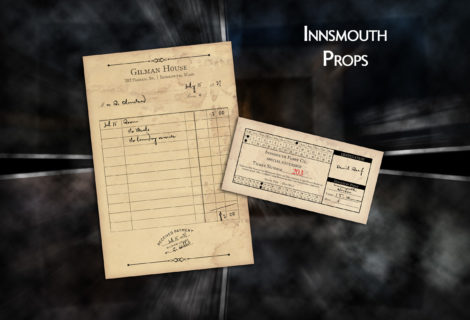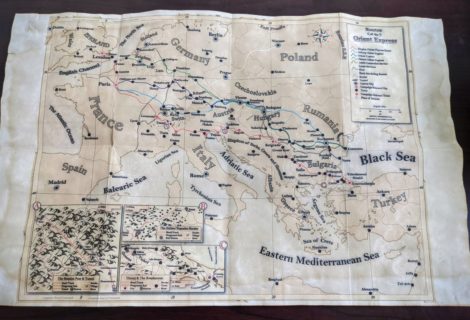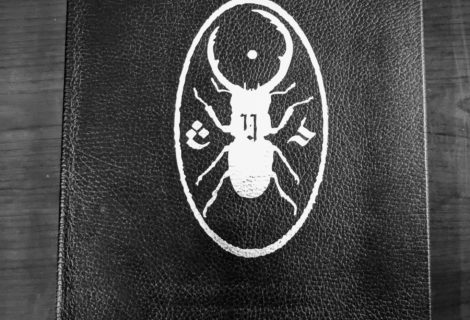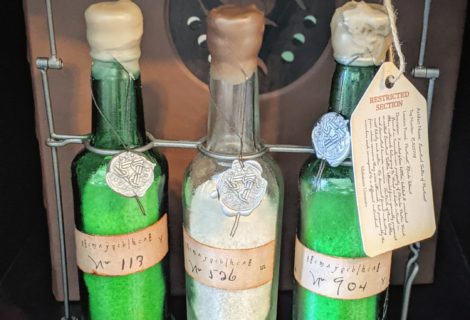Background and Early Concept
I’ve been working on a system to play mythos scenarios that incorporates elements from other tabletop games. It’s inspired by Call of Cthulhu (CoC) and Trail of Cthulhu (ToC) – plus a couple of other RPGs – as well as board games like Mansions of Madness and Arkham Horror: The Card Game (FFG‘s got their hooks in me). My main goal is to make playing more of the wealth of content easier with my family, so a lot of my efforts are based on making the game more accessible and minimize some of the challenges that can come up in play. In the end, I expect it to end up occupying a middle ground between pen and paper roleplaying and a board game.
Background
I’m a big fan of both Mansions of Madness (MoM) (both editions) and Arkham Horror TCG, as well as numerous other board games. At the same time, I also love the greater player freedom (and corresponding greater potential twists) afforded by a tabletop RPG.
I ran The Haunting using Trail of Cthulhu a couple years back with my family – two adults and two kids. None of them had any roleplaying experience. I used lots of props and the adults fell into the swing of things naturally. Had fun, though we didn’t actually engage the system that much. The kids had a more difficult time, partly because the abstract nature of the game (no board, pieces, turns, etc.) made it more difficult for them to engage.
On the other hand, there’s a lot my kids like about Gloomhaven and Descent. They seem to enjoy the basic dungeon crawl concept (although the tactics of how to use their cards was a little challenging) and they liked how missions were linked together to tell a larger story and unlock other missions. Obviously we all also liked unlocking character options and how even when your character died you didn’t feel like you had lost all progress.
On its face, something like Mansions of Madness would seem to strike the ideal balance between dungeon crawler and RPG for myself and the kids. However, there are a couple of shortfalls. The actions are too restrictive to allow for the freedom seen in an RPG, but too varied for my kids to easily decide what they want to do. The scenarios are generally win/lose with little variance. Decisions have no impact outside of the current scenario, so there is no campaign feel.
So the idea is to borrow concepts from all of these games to be able to play the way I want.
Preliminary Concept
So here’s the basic idea so far. You have a Keeper and Investigators a la 1st Ed MoM, or CoC/ToC RPGs. You have two basic levels of play.
I originally referred to the first level of play as the “World Map”. This could be the entire world, just a region, or a town. For more involved campaigns you could even have multiple maps at different levels. I originally conceived of thus as a map showing the various locations the investigators can travel to. As they progress in the story, the map can change. New locations can open up, locations can be closed off, or travel restricted in some ways. Having converted and played a CoC scenario, I have taken to actually using cards to represent these locations.
 Investigators can visit locations and engage in Encounters. Think of Encounters like common scenes in an RPG, for a Lovecraft game something like looking up some information in the local library or purchasing supplies. You may talk to some NPCs and make a few skill rolls, and the scene could even be really important. But if there isn’t any detailed combat or exploration, and the relative positions of the investigators don’t matter, then it can be handled as an Encounter.
Investigators can visit locations and engage in Encounters. Think of Encounters like common scenes in an RPG, for a Lovecraft game something like looking up some information in the local library or purchasing supplies. You may talk to some NPCs and make a few skill rolls, and the scene could even be really important. But if there isn’t any detailed combat or exploration, and the relative positions of the investigators don’t matter, then it can be handled as an Encounter.
However, at some locations the investigators can switch to the second level of play: Investigation. This is very much like the missions from Gloomhaven or Descent, the scenarios from MoM, or a big scene from CoC/ToC that involves searching through a location room by room, combat, etc. The Keeper builds out the map of the location as the Investigators explore. In addition to the advantages that this brings to keeping things straight in combat, the level of tension created by revealing portions of the map a little at a time is a great addition.
A typical adventure/story would involve at least a few Encounters and one or more Investigation Missions. Depending on what the Investigators do the details of those Encounters and Investigations would vary as determined by the Keeper. Investigators could also come across clues unrelated to the current scenario, but which lead into others. In other words, these are hooks which unlock other locations/scenarios.
Using Existing Content
Given the wealth of mythos content out there that I want to play, I need to be able to use my system to play it, which means I need to be able to convert it. Playing converted content is also a good way to test out and continue to develop the system, so converting and playing existing mythos scenarios has become a major focus. I’ve already played the Peru Prologue for the Masks of Nyarlathotep Call of Cthulhu campaign, and I’m currently converting the classic Call of Cthulhu introductory scenario, The Haunting.
One concept I’m incorporating into my The Haunting conversion is giving the Keeper tools to resolve scenes in different ways, depending on what the Keeper and players want to focus on in terms of story and gameplay. In essence, the game could be played as a full pen & paper RPG, a simpler (and shorter) tabletop game, or anywhere in between. To that end, each scene could be played using one a variety of methods. The Keeper chooses how to play through each scene depending on how important the scene is to the story, what the players are likely to find most interesting, how much time and focus they all want the scene to take in the scenario, etc. In addition to helping the Keeper keep things interesting for the players, this also allows for gameplay to be sped up or slowed down depending on how much time everyone has to play and in how much detail they want to explore each scene.






Recent Comments